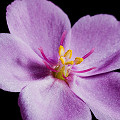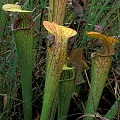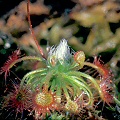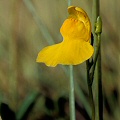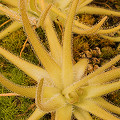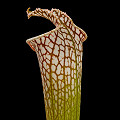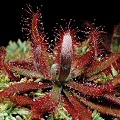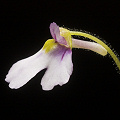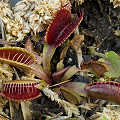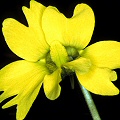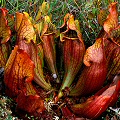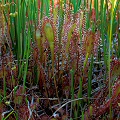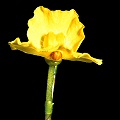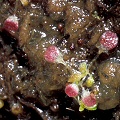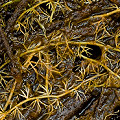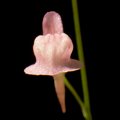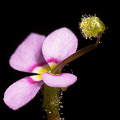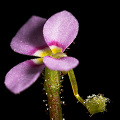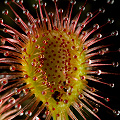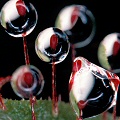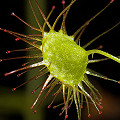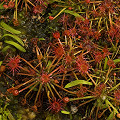Q: What are the best books on carnivorous plants?
A:
I will start by saying that I have written a couple of books on carnivorous plants; you can
read about them here. One book is a summary book on carnivorous plants, the other is pitched towards children. Needless to say, I think
they are both excellent because I decided what should go into them!
Regarding my first book, every
chapter of it was reviewed by experts when the book was in draft. So the book is factually robust. However, it is quite old at this point, and the species lists are now
quite out of date. So I can't recommend it as your only resource. However, yes, I am proud of the book---I would be lying if I said otherwise!
(Incidentally, if I did not mention my books first,
I think some publicists at Timber Press or Scholastic would send send hitmen after me.)
One annoying thing about carnivorous plant books is that nearly
all have unoriginal titles like "Carnivorous Plants" or "Insect-Eating
Plants" (including my own!). Since this leads towards confusion, people tend to use the
author's names when discussing such books. If you have recently written a book on carnivorous plants,
and I have forgotten to list it here, please e-mail me! For a complete listing of carnivorous plant books, look
at Ivo Koudela's (now dated) compendium
I store at the FAQ library.
But let us proceed. There are about a bazillion carnivorous plant books, and while
many are duds, most have their strengths, and a very few are spectacular. My
top few are listed below. While I like a lot of the others, these are the ones I would want restored to me if my house caught
fire...
The tiny list
1)If you are starting your carnivorous plant library, without a doubt you should get Peter D'Amato's marvelous book, "The Savage Garden (2nd edition)." (It even has an original title!) This funny, quirky contribution is absolutely the best choice for a person who wants to grow carnivorous plants. I refer to it constantly when looking for clues on growing new plants. It is inexpensive, sturdily made, and stuffed full of horticultural gospel. Best of all, it is easily available in most bookstores. I advise you to buy it directly from the author, because he will sign it for you. Look in the list of nurseries to find him (he is at California Carnivores). Oh, you definitely want the second edition, as it is a huge expansion on the first editon.
2)Don Schnell has written two editions of his book, but while they both
have the same title, they are completely different. Both editions are restricted to the several genera of
carnivorous plants of the US and
Canada. I encourage you to instead buy the second edition, which is much larger at
468 pages long! Schnell's book has some errors when dealing with western species---but most of the book focuses on
the eastern part of the continent, so this is not such a problem. You can get this book from Timber Press.
3)Peter Taylor wrote the essential monograph on Utricularia; this is
a work of extreme geekiness and is not for the beginner.
But it is crucial reading for the Utricularia geek.
4)The hardcover books written by Charles Clarke are essential books for the fan
of Nepenthes. Yes, I know these have been replaced by other books, but I still think these are things of beauty
to be cherished.
5)Redfern books--So, Stew McPherson began a publishing house some years ago, and has been steadily publishing out book, after book, after book. The
sheer volume is amazing. Now, it must fairly be said that for several years, his publication algorithm lacked a bit of editorial oversight, and as such his works were
somewhat repetitive. However, over time his methodology has improved, and at this point just about every scientist active in the field of natural history has appeared one
way or another on the spine of his books as authors. It is truly amazing how many books his firm has released--I certainly don't have them all--maybe about 21--but the
shelf space taken up by his works are nearly as expansive as all the books I have by all the other authors, combined!
If you were looking to buy some core books from this collection, I'd recommend you try Allen Lowrie's 3-volume set, and then the volumes on the various genera. The books
with lots of authors are quite good.
6)Carnivorous Plant Newsletter is a small, quarterly
journal that has been in print since 1972. It is published by
The International Carnivorous Plant Society. Carnivorous Plant Newsletter
is filled with topical and accurate information on all aspects of carnivorous
plants. Most of the other carnivorous plant societies also have
publications.
A bigger list
Listed by author, the prominent carnivorous plant books are as
follows:
Gordon Cheers wrote two books (one full-size, the other
much smaller) which are filled with good horticultural information.
Charles Clarke has written a marvelous pair of books called
"Nepenthes of Borneo," and
"Nepenthes of Sumatra" I strongly recommend
these. They have a strong ecological perspective.
Peter D'Amato has written an excellent compendium of horticultural information from the perspective
of a grower in northern California. The second edition of his book is much enlarged, and by far the more sensible one for you to buy.
Doug Darnowski has a slim volume on Stylidium, possibly a genus of carnivorous
plants. This is an update of Erickson's book on the subject.
Charles Darwin's old volume (1892) is not easy to plow through, but is enjoyable
and thorough, as you would expect from this author.
Rica Erickson's books on Australian sundews and trigger plants are pretty but out of date.
Juniper, Robins, & Joel is a fine reference for the chemical workings
of carnivorous plants, but
it is not a good source of general information. (It has a difficult layout with
a great deal of repetition.) I do not recommend buying it without looking at
it first. It has, however, an excellent bibliography.
Katsuhiko Kondo's Japanese review is excellent for the photography, even if you don't read Japanese!
Marcel Lecoufle is a disaster of misinformation.
F.E. Lloyd (1942) is very readable. It is still the best place to read about
the structure of each genera's capturing mechanisms, especially if
you want to know the excrutiatingly minute details.
Allen Lowrie wrote an early work
on Australian carnivores. A three volume effort, this series
covered all the Australian species except for more obscure Utricularia. His more recent Redfern work updated all this, of course.
Stewart McPherson--see the comments under Redfern, near the top of this page.
Nelson & McKinley is a wonderful work on the history of the
Venus flytrap
and how botanists responded to its discovery. But like Taylor, there is no general
information on carnivorous plants. It is a very specialized work.
Phillipps & Lamb wrote "Pitcher-Plants of Borneo." Compared to
Clarke's book, it is a more arty, and less scientific work
(that is not a criticism, just an observation).
Pietropaolo (actually, two of them) wrote a book, (actually, two of
them) one of which is easily
available. Unfortunately, their environmental ethics leaves so much to be desired
(they misinterpret ecology weirdly and even declare field collection is
desirable!),
and their professional nursery practices are so
unsatisfying to customers that my good will towards
their books has been spoiled (see the compendium of complaints against them
in the FAQ library).
Barry Rice Ooh look! I made the list!
Nick Romanowski has written a nice, small book on growing Sarracenia.
Hawkeye Rondeau has written a few spiral-bound volumes on the carnivorous
plants of California. These are available only directly from the author.
Bruce Salmon has written a superb volume dealing with the carnivorous
flora of New Zealand. A relatively small topic, but marvelously handled in
fine detail.
Don Schnell, as described above, has a pair of excellent books on the carnivorous species of USA and Canada.
Adrian Slack For older, but still excellent
cultivation information, both of Slack's books are widely beloved.
Miloslav Studnicka has written two books in Czech, and both are considered quite excellent by those who
can read them.
Peter Taylor wrote a monumental work on the genus Utricularia.
This monograph is a very technical volume useful for those who can tell a
bract from a bracteole, and a peduncle from a pedicel. Otherwise it may go
over the head of the reader. But if you love this genus, the book is required
reading!
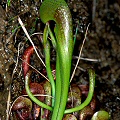 Little
Little
Darlingtonia californica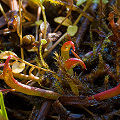 Baby
Baby
Darlingtonia californica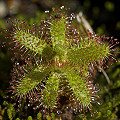 Seedling
Seedling
Drosera cistiflora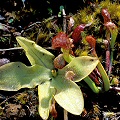 Immature
Immature
plants
There are many children's books on carnivorous plants. I have looked through
several and they are all generally ok. They are suprisingly free of errors, and
are a nice way to expose kids to the wonders of science. Take a look at Amazon.com
to review the various titles.
If you want to buy any of the above books, you should try to order them from the authors. Failing that, try ordering from a local
bookstore. Failing that, try large bookstores or of course Amazon.com.
If the book is out of print, you will be out of luck.
In that event you will have to look in used bookstores.
As you continue your readings, you will probably search for the great classics
of carnivorous plant studies that were printed in scientific journals.
Particularly useful are works by Darwin,
Danser (Nepenthes), Diels (Drosera),
Macfarlane (Sarracenia and others), Obermeyer,
and so on. For detailed work on Nepenthes,
you may have to search for the many small
pamphlet-sized books that have been written by authors such as Kurata,
Jebb,
and others.
Page citations: cited works, personal observations.
